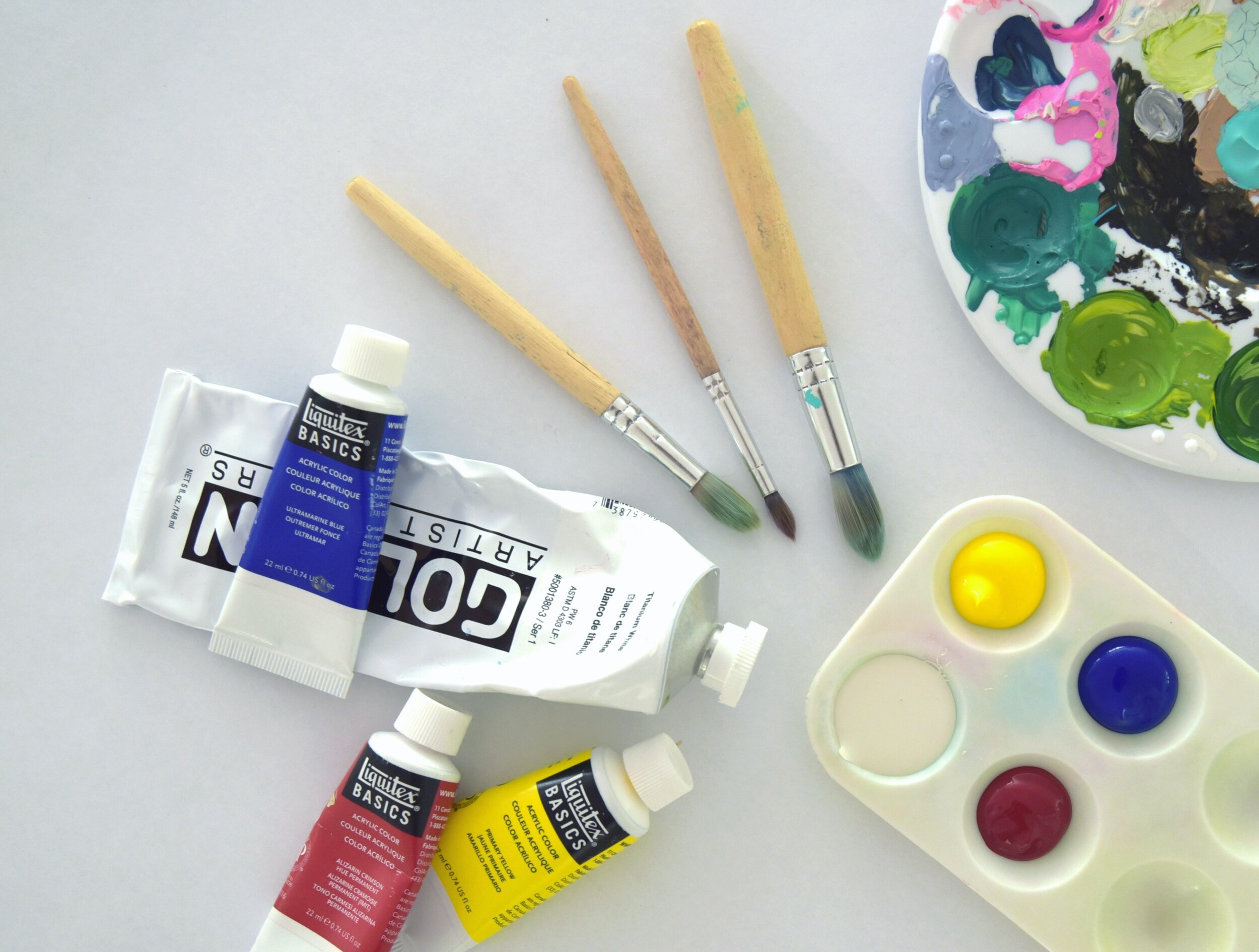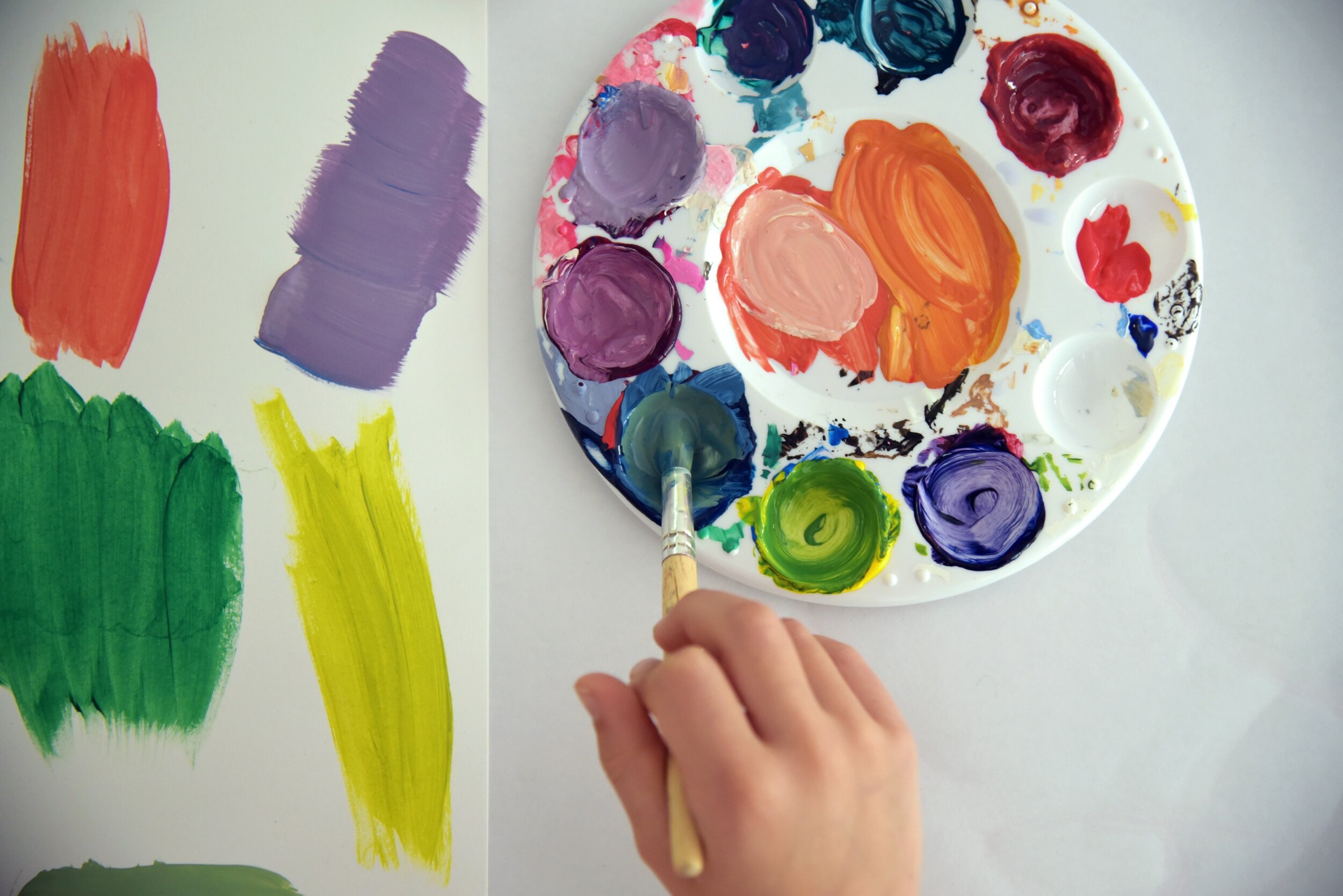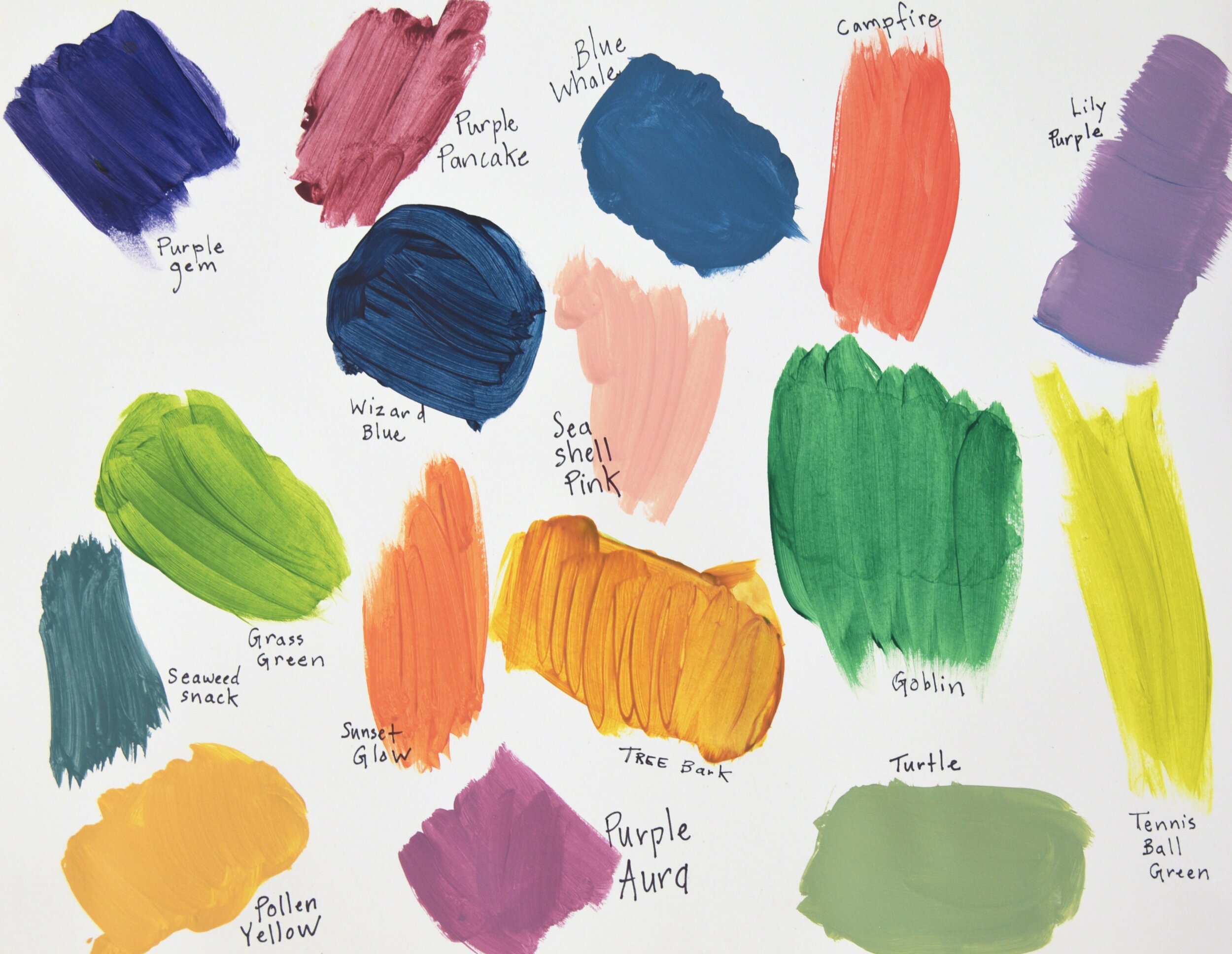Colour Exploration
Exhibition: Heaven Can Wait
Artist: Roy Caussy
Overview
Colour plays a large role in our lives and has the ability to enhance an environment, influence our well-being and evoke a mood. In the visual arts, colour theory helps guide an artists choices in mixing colours and the visual effects of a specific colour combination. Throughout the works in Heaven Can Wait, we see Roy Caussy’s vibrant use of colour demand attention and exemplify his uninhibited exploration of colour. Colour is a pervasive part of our everyday visual world and for many it can become an intuitive choice. In this project, participants will explore the process of mixing colours. They will learn the basic principles of colour theory while following their curiosities to create their own unique colour palette.
Objectives
Learn to develop self-expression through colour
Understand basic principles of colour theory
Materials
Paint in basic primary colours; red, blue, yellow (may include black and white)
Paintbrushes
Small jars, palettes or egg cartons for mixing
Popsicle sticks for mixing
Water
Small squeeze bottles (optional; works well with younger participants)
Paper
Instructions:
Step One
Transfer paint in to squeeze bottles (for younger participants) or, transfer in to small jars for participants to scoop paint colours out.
Step Two
Explore mixing combinations of primary colours together.
Step Three
Explore combining primary colours with secondary colours to create tertiary colours.
Step Four
As you are mixing, record your colour by painting a swatch on to a piece of paper.
When participants are satisfied with the colours they mixed, they can name their unique colour creation. Label your paper if you wish.
Variations
Younger participants and beginner colour mixers should start with primary colours so they can discover how to make secondary colours.
Older participants— increase initial colours available to allow them more variety of blending options. Include black and white so that they can explore value. Try creating a value scale of a particular colour.
Basic colour theory vocabulary:
Primary Hues— red, yellow and blue. These colours are at their basic essence, they can not be created by mixing other colours.
Secondary Hues— green, violet and orange. These colours are created by combining two primary hues.
Tertiary (Intermediate Hues)— created when you combine a primary and a secondary hue.
Hue— “pure” colour.
Value— the lightness or darkness of a colour.


